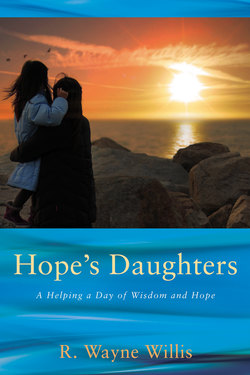Читать книгу Hope’s Daughters - R. Wayne Willis - Страница 49
На сайте Литреса книга снята с продажи.
February 9
ОглавлениеA friend of mine described a profound insight he had while driving from Louisville to Nashville. It was February, and a major ice storm had struck the area the night before. For many miles, both sides of I-65 were strewn with broken and damaged trees.
As my friend looked over the debris, he observed a pattern. Many of the trees were leaning. All those trees were situated in a grove where the trees around them had caught the tilting trees and held them. The grove kept them from snapping and falling.
All the trees that had snapped and broken off at the trunk, and all the ones that were lying on the ground uprooted, had one thing in common—they had either been standing on the perimeter of the forest or they had been standing alone.
He mentioned this to me and another person over lunch. The other person, who was a biologist, told him that if he could only have seen beneath the surface, he would know that the roots were also connected. The interlaced trees were bracing each other below as well as above ground. When the rains came down and turned to ice and the winds beat upon the forest, the intertwined trees were able to stand.
Several weeks after that lunch conversation, I serendipitously came across these words from psychologist and philosopher William James: “Our lives are like islands in the sea, or like trees in the forest. The maple and the pine may whisper to each other with their leaves, but the trees also commingle their roots in the darkness underground, and the islands also hang together through the ocean’s bottom.”
Going it alone is high-risk, perilous behavior. Interdependence—not dependence, not co-dependence, and not independence—steels us for the ice storms of life. Being in community enables us to stand. Sometimes community alone saves us from being uprooted, breaking, or crashing to the ground.
